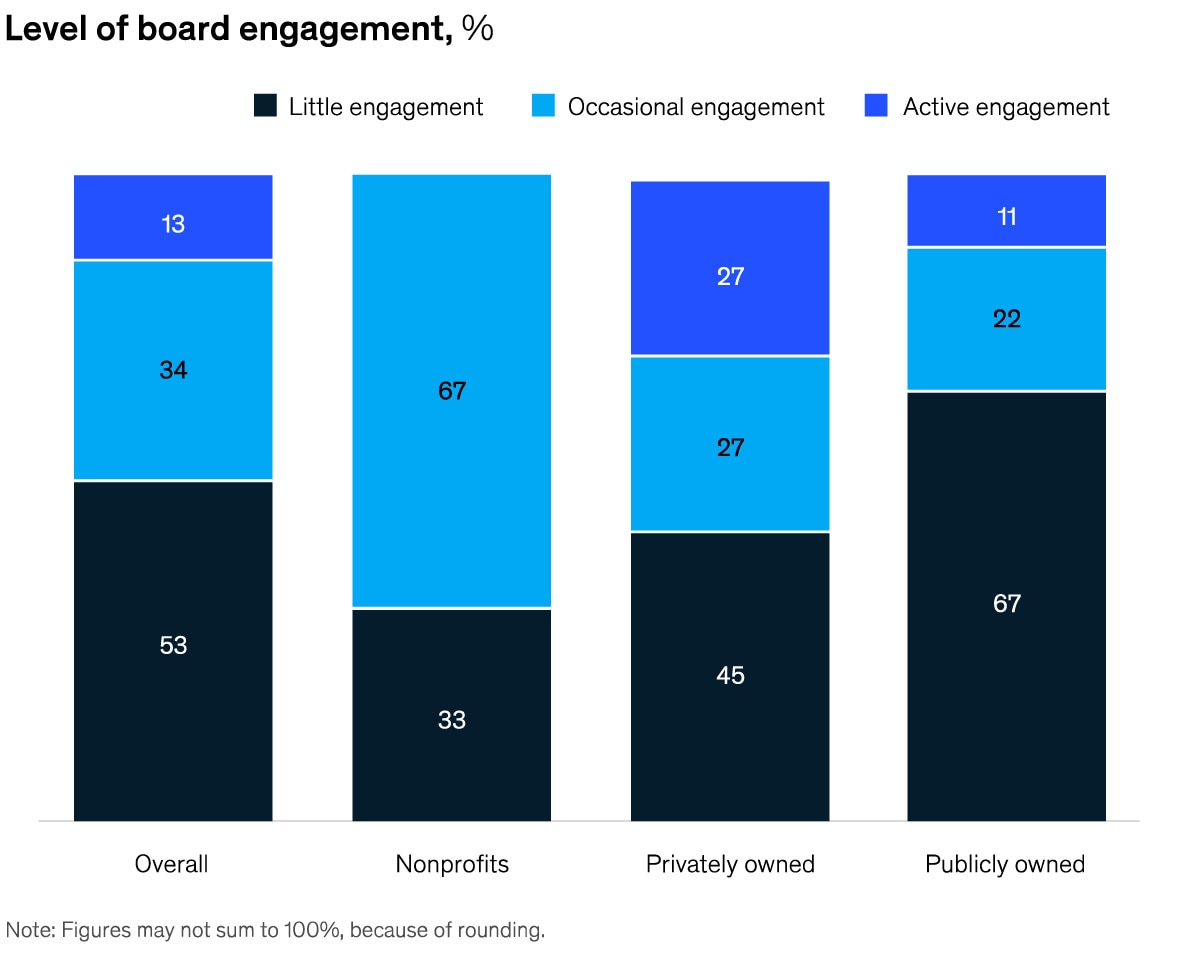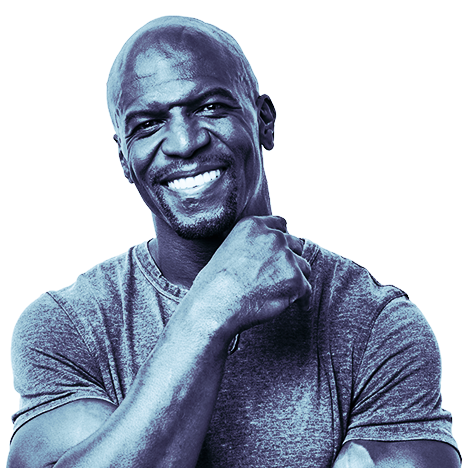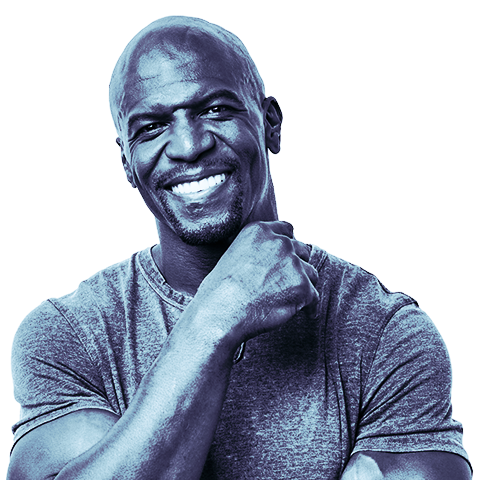
| Our best ideas, quick and curated | April 22, 2022
|
| This week, the hazards and opportunities for real estate as the world tackles climate change. Plus, why boards should be more strategic about cloud, and Terry Crews, the Brooklyn Nine-Nine actor and former NFL player, explores how “tough guys” can find strength in vulnerability. |
|
|
|
| For what it’s worth. The value of real estate has long been set primarily by its proximity to the center of action in any town or city. Today, risks posed by climate change are changing how real-estate value is calculated. These risks may be physical, as markets consider hazards posed by a changing climate. There are also transition risks, including changes to the economy, to regulations, and in consumer behavior as the world targets net zero. The real-estate industry is increasingly realizing that these risks have implications for long-term values, revenue, operating costs, and capitalization rates. |
| Obvious, and not so obvious. Some climate risks are easier to see, like those posed to properties in coastal settings where flooding could cause physical damage. But it’s trickier for real estate to learn to predict, model, and measure harder-to-perceive risks. For example, there could be declines in sectors or markets tied to traditional energy sources that could lead to depressed occupancy and lower rents. Significant capital investment may be required to meet local energy efficiency and emissions standards; there may also be new tenant demands as companies aim to comply with new regulations governing their own carbon footprints. |
| Build better. One way to mitigate climate-change risks is to construct buildings in more efficient ways that create fewer emissions. It’s no simple task: construction is directly or indirectly responsible for almost 40 percent of global carbon-dioxide emissions from fuel combustion and 25 percent of greenhouse-gas emissions across the economy. These statistics may be surprising, as we tend to think of moving objects, such as cars and airplanes, as potential “gas guzzlers,” not static buildings. |
| Decarbonize existing buildings. With roughly 80 percent of the predicted building stock for 2050 already in existence today, there is a huge need to retrofit. It won’t be cheap: the average annual spending on physical assets between 2020 and 2050 would be $1.7 trillion per year. The buildings sector would have to decarbonize by improving energy efficiency, for example, through the use of insulation and by replacing fossil fuel–powered heating and cooking equipment with low-emissions systems, among other interventions. Stakeholders across the value chain will have to collaborate to succeed. The industry will need to align incentives for stakeholders such as building owners, who invest capital, and tenants, who may see the benefits of reduced operating costs. Plenty of hands will be required to insulate and decarbonize buildings, resulting in a net gain of about half a million direct jobs by 2050. |
| A new door opens. Climate-change risk poses many challenges to the real-estate sector, but it also opens up new opportunities. Firms can differentiate by offering buildings that use greener materials and are constructed in energy-conserving ways. Residents and tenants around the world are increasingly eager to live and work in spaces that consider the environment and their health and wellness. High-rise buildings will increasingly be built for mixed-use purposes, where floors in the same building will be used for offices, homes, and hotels. Real-estate companies that think deeply about how people want to live and work, and the values and community that matter to them most, will have the edge. |
| — Katy McLaughlin |
|
|

|
|
|
| PODCAST |
| The rising risk of a global food crisis |
| In the global food system, previous supply–demand scenarios were mostly encoded around weather and other supply-related events. In the past few years, the global pandemic has clearly tested, and in many cases proved, the resilience of the food system. But Russia’s invasion of Ukraine, one of the world’s six breadbasket regions, risks tilting the food system into global crisis. In this installment of The McKinsey Podcast, two McKinsey agriculture experts discuss the looming threat, what’s at stake, and what might be done to help. |
|
|
|
|
|
|
| THREE QUESTIONS FOR |
| Terry Crews |
| In Tough: My Journey to True Power, Terry Crews, the Brooklyn Nine-Nine actor and former NFL player, explores how “tough guys” can find strength in vulnerability. This is excerpted from an edition of McKinsey Global Publishing’s Author Talks series. |
|
|
|
|
| Why write this book, and why now? |
| Tough is a journey of revelation for me. My whole life, I thought the definition of tough was totally opposite to what being tough actually is. When you find something out, you have a responsibility to tell your truth to others who may not know it. For me, writing a book is the best way to convey your thoughts and put everything out there as thoroughly and completely as you can without being taken out of context, which is a big thing that happens now on social media—people can take one thing and twist it to mean something else. The good thing about a book is that the people who decide to read it tend to be invested, and they can take in the whole of what you say, which is something that’s been lost, I think, in a lot of conversations. |
| How did you used to define toughness? |
| One thing I discovered in writing this book is that my definition of toughness was “cold.” It was the ability to shut emotion off. I’ve heard a quote—hopefully, I don’t mess it up—but it was about intense morality and how, if you have it, it makes a bad soldier. You have to turn off your moral compass to be a good soldier, so that you can do what needs to be done no matter who gets hurt or what goes on around you or how your world can crumble. That definition of tough had taken over, especially in the world of masculinity. |
| I was involved in a very competitive world. From growing up among gang members and drug dealers all the way to sports and the NFL, I watched, and I became what I saw. It was about turning off your emotions, turning off what you’re feeling, turning off your pain compass. The revelation that came to me much later was that toughness is not the ability to throw a punch. |
| One thing I say all the time is that you can either have success or revenge, but you can’t have both. Many men live their lives like they’re in a revenge movie, like it’s a fantasy where they’ve been wronged, and now they’re going to get back at every person who wronged them, one at a time. The problem is that success is about letting go. Success is not about getting back at people; it’s about finding a new way to live, about finding new areas and new things so that it doesn’t even matter what someone else does to you, because you’re already gone, you’re already in a new place. |
| What should business leaders understand about being tough? |
| I truly believe that competition is the opposite of creativity. Creativity is mixing two things together. The definition, at its core, is when someone finds one thing and then goes, “Wait a minute, if I put this in there, I have something new!” |
| When you put yourself into something, you are automatically exercising creativity simply because that cause, or project, or team you join has never had you. When you collaborate with another person, you are going to come up with something special. That’s just the way creativity goes. But if you’re fighting with everyone—if you’re trying to beat everyone—creativity stops, and then judgment starts. I like to say judgment kills all creativity. |
| Creativity stops because you’re working for perfection. You’re working against other people. You’re looking at other people’s papers. You’re trying to compare. This is called the sin of comparison—when what you have is never good enough, because you’re always looking at someone else’s stuff. You’re not collaborating, you’re competing. |
| I like being on a show like Brooklyn Nine-Nine, where we can collaborate and we can make people laugh. Remember, when you’re doing comedy, the only rule is that you have to say yes. Especially in ad-libbing and especially with improv, you have to accept what the other person is saying for it to be funny. I love being this big, muscular guy in this comedy world, you know? I created a new thing, and because of that, it made me an original. I decided to just do that with everything: don’t worry, don’t fight against people, just collaborate and make something new. |
| — Edited by Barbara Tierney |
|
|
|
| BACKTALK |
| Have feedback or other ideas? We’d love to hear from you. |
|
 |
|
|
Did you enjoy this newsletter? Forward it to colleagues and friends so they can subscribe too.
Was this issue forwarded to you? Sign up for it and sample our 40+ other free email subscriptions here.
|
|
|
This email contains information about McKinsey’s research, insights, services, or events. By opening our emails or clicking on links, you agree to our use of cookies and web tracking technology. For more information on how we use and protect your information, please review our privacy policy.
|
|
You received this email because you subscribed to The Shortlist newsletter.
|
|
|
|
Copyright © 2022 | McKinsey & Company, 3 World Trade Center, 175 Greenwich Street, New York, NY 10007
|
|
|
|






